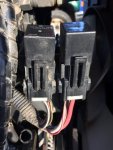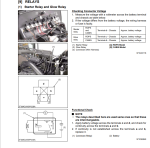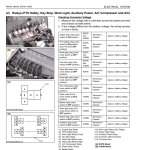Hi,
I have a 2008 7040 tractor. It wouldn't start and I narrowed things down to the stop solenoid. I get 4.0 DC volts to both sides with the ignition switch turned on... but it wont engage. After removal the engine runs fine and can be shut off via the manual fuel shutoff on the injector (presumably the same one held open when the stop solenoid is not engaged).
When I jump the solenoid from my 12 v battery, one side (the start side) results in rapid cycling of the plunger... not a constant retraction, but the hold side does nothing. Is the 4.0 v sufficient or is the solenoid bad? Might the input voltage be too low? There is a 30 amp slow blow fuse running to the solenoid.
I'm not too mechanically or electrically inclined.. please keep things simple for me...
I have a 2008 7040 tractor. It wouldn't start and I narrowed things down to the stop solenoid. I get 4.0 DC volts to both sides with the ignition switch turned on... but it wont engage. After removal the engine runs fine and can be shut off via the manual fuel shutoff on the injector (presumably the same one held open when the stop solenoid is not engaged).
When I jump the solenoid from my 12 v battery, one side (the start side) results in rapid cycling of the plunger... not a constant retraction, but the hold side does nothing. Is the 4.0 v sufficient or is the solenoid bad? Might the input voltage be too low? There is a 30 amp slow blow fuse running to the solenoid.
I'm not too mechanically or electrically inclined.. please keep things simple for me...




